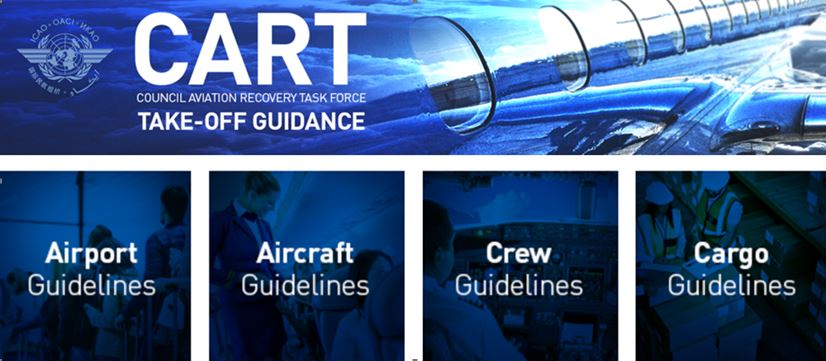COVID19 Second Wave in Europe Impacting Passenger Confidence, Demand & Profitability (Part 1 of 2)
Kimmo Ruotsalainen
October 7, 2020

Part 2 of this article will be published on October 14th, 2020. As the aviation sector was seeing a slight change for the better after the European summer season, airlines have now been forced to cut down capacity planned for the winter 20/21 season. Effectively, this is due to the fact that the vast majority of European countries are currently declaring more COVID19 cases each day now than they were during the first wave earlier this year. Reports show that there have been nearly six million confirmed cases of coronavirus in Europe to date. Moreover, there has been a distinct increase in the number of new cases in Europe since the end of August. Russia has had the highest amount of confirmed cases in Europe with over 1.2 million, followed by Spain with over 825,000 cases. One explanation might be that while infection numbers may appear higher, it could simply be the increases in testing capacity are identified more cases, per World Health Organization (WHO).  As we look to the post-pandemic world, the recovery of the aviation industry is dependent on future developments such as the opening up of international borders, requirements and regulations for air travel, as well as introduction of medical breakthroughs. Thus there is demand by all aviation stakeholders for more unified approach on clearer guidelines and processes to gain passenger confidence despite the turbulence caused by COVID19. In fact, as International Civil Aviation Organization (ICAO), Airports Council International (ACI) World and the International Air Transport Association (IATA) emphasize, the aim as we return to air travel is to ensure the health and safety of operations are mitigated while the threat of COVID-19 remains in the population. The aviation industry, focused on the health and safety of passengers and their employees, has worked with ICAO’s Council Aviation Recovery Taskforce (CART), which included the World Health Organization, to agree and implement a layered approach to health measures that will enable safe operations amid the COVID-19 crisis. For more on the CART initiative, please check out our June 2020 two-part IR Pulse article ’Operationalizing New Aviation Health Requirements in the Age of Coronavirus’.
As we look to the post-pandemic world, the recovery of the aviation industry is dependent on future developments such as the opening up of international borders, requirements and regulations for air travel, as well as introduction of medical breakthroughs. Thus there is demand by all aviation stakeholders for more unified approach on clearer guidelines and processes to gain passenger confidence despite the turbulence caused by COVID19. In fact, as International Civil Aviation Organization (ICAO), Airports Council International (ACI) World and the International Air Transport Association (IATA) emphasize, the aim as we return to air travel is to ensure the health and safety of operations are mitigated while the threat of COVID-19 remains in the population. The aviation industry, focused on the health and safety of passengers and their employees, has worked with ICAO’s Council Aviation Recovery Taskforce (CART), which included the World Health Organization, to agree and implement a layered approach to health measures that will enable safe operations amid the COVID-19 crisis. For more on the CART initiative, please check out our June 2020 two-part IR Pulse article ’Operationalizing New Aviation Health Requirements in the Age of Coronavirus’.  In order to boost passenger confidence, ACI World and IATA held a joint call on October 07 with ICAO for a globally-consistent approach to testing international passengers as an alternative to quarantine measures. A consistent approach to testing passengers will eventually play a role in restoring the confidence of passengers. In Europe, some of the airlines and air travelers have been suffering from somewhat great variance in restrictions for coronavirus air travel. In order to harmonize the variety in restrictions, EU has recently announced an agreement on a common traffic light system for coronavirus travel. Under the plan, regions across the European Union will be designated green, orange or red based on the degree to which the virus is under control (grey if data is insufficient). The idea is that all countries will grant access to visitors from green zones. While individual European Union (EU) countries are free to determine their own measures, they will be encouraged to be consistent to reduce variance in restrictions, for example setting the same measures for all red zones. Obviously this creates pressure on governments from the aviation and travel sector as they expect country leaders to follow and adopt the EU proposal for guidelines. The new proposed EU level agreement consists of a green status that will apply to regions with fewer than 25 infections per 100,000 people over the last in 14 days and where the percentage of positive tests is below 4%. Orange, as a new measure, means over 25 and less than 50 infections per 100,000 people over a 14 day period. Governments may also recommend a COVID-19 test prior to departure or upon arrival. Red means infection rates of 50 or more and positive tests above 4% or infection rates of over 150 with a low positive test rate (per NYT). Part 2 of this article will be published on October 14th, 2020.
In order to boost passenger confidence, ACI World and IATA held a joint call on October 07 with ICAO for a globally-consistent approach to testing international passengers as an alternative to quarantine measures. A consistent approach to testing passengers will eventually play a role in restoring the confidence of passengers. In Europe, some of the airlines and air travelers have been suffering from somewhat great variance in restrictions for coronavirus air travel. In order to harmonize the variety in restrictions, EU has recently announced an agreement on a common traffic light system for coronavirus travel. Under the plan, regions across the European Union will be designated green, orange or red based on the degree to which the virus is under control (grey if data is insufficient). The idea is that all countries will grant access to visitors from green zones. While individual European Union (EU) countries are free to determine their own measures, they will be encouraged to be consistent to reduce variance in restrictions, for example setting the same measures for all red zones. Obviously this creates pressure on governments from the aviation and travel sector as they expect country leaders to follow and adopt the EU proposal for guidelines. The new proposed EU level agreement consists of a green status that will apply to regions with fewer than 25 infections per 100,000 people over the last in 14 days and where the percentage of positive tests is below 4%. Orange, as a new measure, means over 25 and less than 50 infections per 100,000 people over a 14 day period. Governments may also recommend a COVID-19 test prior to departure or upon arrival. Red means infection rates of 50 or more and positive tests above 4% or infection rates of over 150 with a low positive test rate (per NYT). Part 2 of this article will be published on October 14th, 2020.
